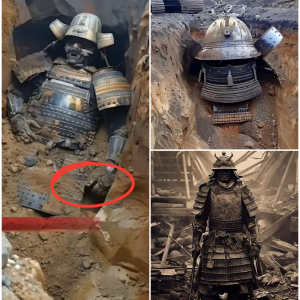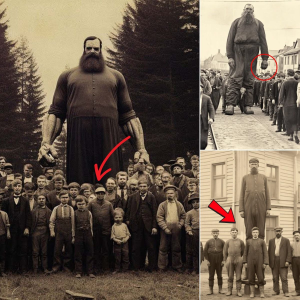When researching the reality of giants in the past, one story which has survived the ages is the apparent discovery of the ‘Glastonbury Giant’ which was allegedly unearthed in 1190, on orders of King Henry II , following rumors that the legendary King Arthur was in fact buried at that specific location.

Here, between two ancient pyramid-shaped pillars at Glastonbury in Somerset, England, workers dug down to a depth of seven feet where they found a leaden cross with the inscription:
HIC JACET SEPLTUS INCLYTUS REX ARTURUS IN INSULA AVALLONI
This translates as “Here lies buried the renowned King Arthur in the Isle of Avalon.”
This discovery inspired the excavators to dig even further in the hope of finding solid proof of the legend’s existence and at sixteen feet deep they finally struck a large coffin hollowed out from the trunk of an old oak tree.

Inside they discovered the skeletal remains of a man who had once measured close to nine feet tall, laid next to the skeleton of an average-sized woman, assumed at that time to be Arthur’s Queen, Guinevere.
As covered in detail in The Myth Of Man by J.P. Robinson, skeletons measuring nine feet tall have been found all over the globe, with many examples having been discovered in the United States in particular.
Glastonbury’s Association with King Arthur
It is said that their bones were reinterred in the church there about a century later, right before the altar and in the presence of King Edward I .
It is from that time that Glastonbury’s long association with the Arthurian legends was cemented in history, despite the opposing arguments claiming that the inscribed leaden cross must have been placed there much later than the original grave, as it was buried nine feet above the actual coffin.
Site of what was supposed to be the grave of King Arthur and Queen Guinevere on the grounds of former Glastonbury Abbey, Somerset, UK.
Many believed that the cross must be a fraud, possibly left there by the monks at the nearby Benedictine Abbey, in an attempt to reap fame upon the abbey and the area by encouraging the nobility to offer donations supporting such a hallowed spot where the body of one of England’s greatest ever legends was laid to rest.
The Encyclopedia Britannica supports this theory, ‘The identification of Avalon with Glastonbury is equally likely to have been an attempt by Glastonbury monks to exploit the prestige of the Arthurian legends for the benefit of their own community, just as later the popularity of the Grail legend led them to claim that Joseph of Arimathea had established himself at Glastonbury.’ Others have suggested that the bodies were likely Celtic in origin, as hollowed-out oak trunk coffins had been a method used by the Celts in the past.
Despite the conspicuous discovery of Arthur’s alleged gravestone , the actual find of a giant figure is not really up for dispute, as the respected historian Giraldus Cambrensis personally examined the massive bones in 1194 and he pronounced them genuine.
Then hundreds of years later, in 1962-63, archaeologist Dr. Ralegh Radford studied the ancient giant remains following additional excavations of the site and ‘confirmed that a prominent personage had indeed been buried there at the period in question.’
So, whether or not the bones belonged to the legendary King Arthur or not, it appears that the skeletal remains of a nine-foot-tall male were unearthed at Glastonbury nearly 1,000 years ago, which brings giant mythology back to life.
Who knows what other remarkable finds lay buried beneath the ground waiting to be discovered?





